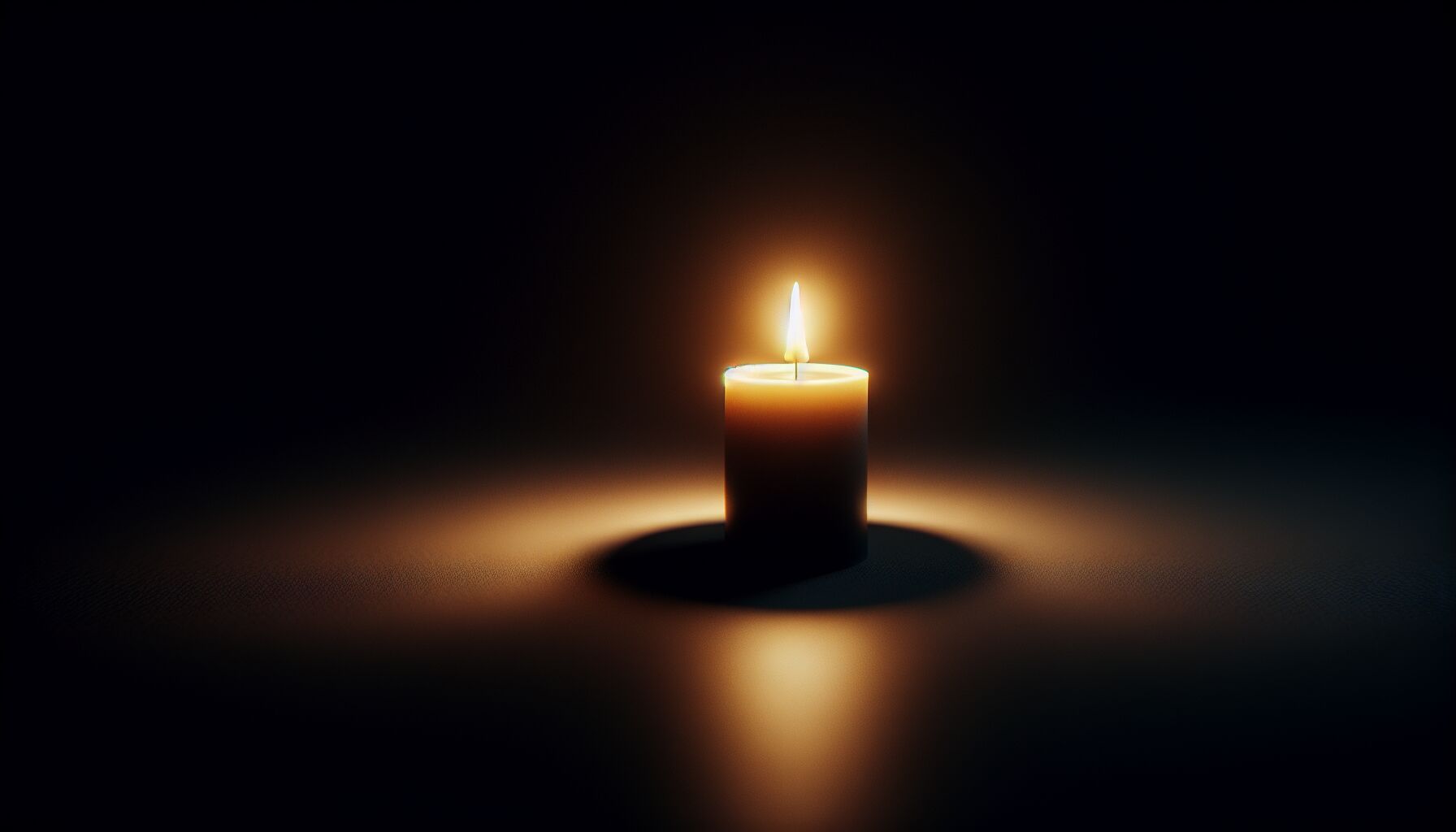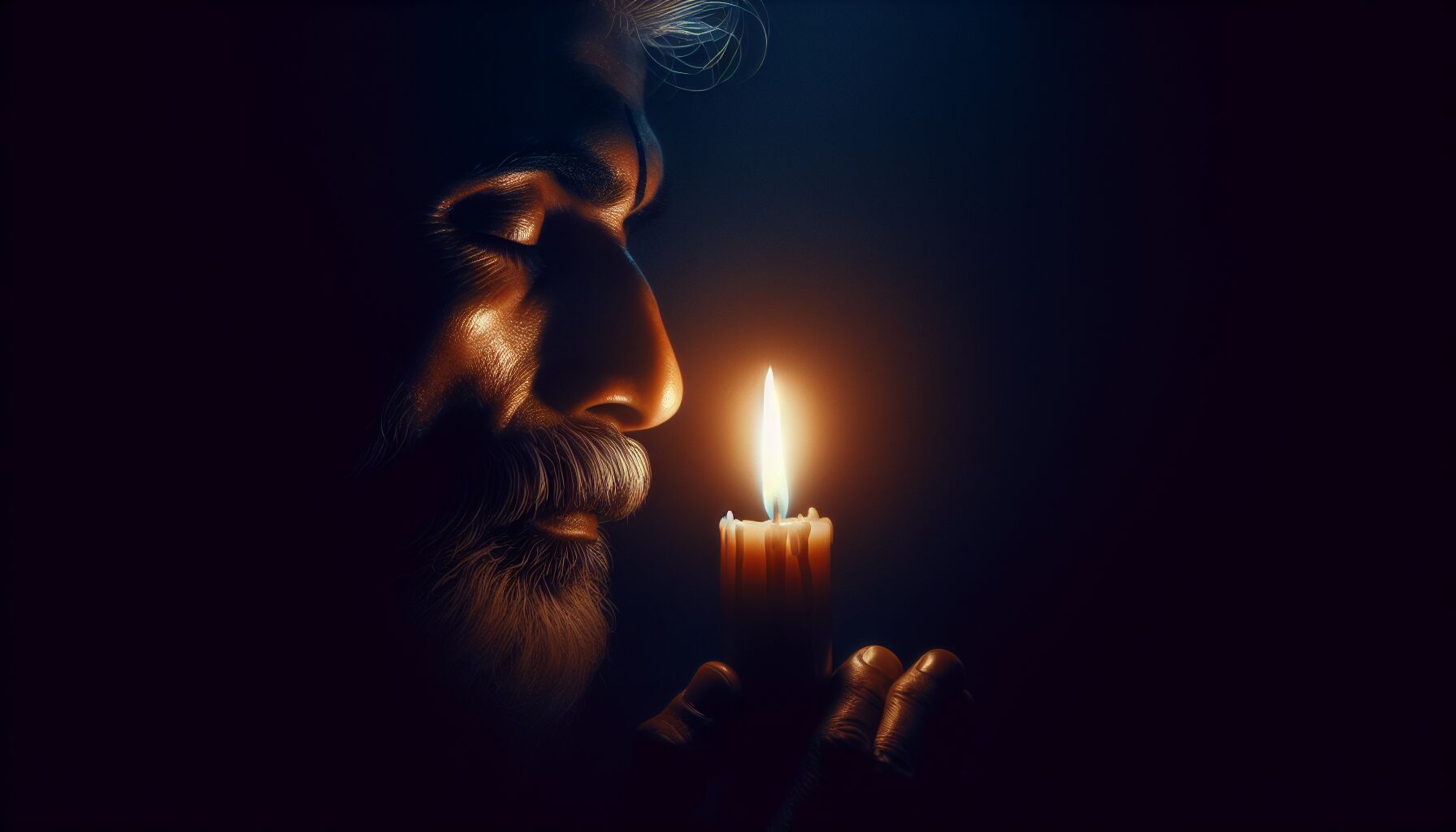 You ever notice how the mind jumps from one thing to the next like a squirrel in a walnut grove? Constant noise. Planning, regretting, worrying—rarely just *being*. Candle gazing, or *Trataka* as it’s known in classical yoga texts, isn’t just some relaxing hobby from an old book—it’s a deliberate practice that invites your scattered awareness to return home.
You ever notice how the mind jumps from one thing to the next like a squirrel in a walnut grove? Constant noise. Planning, regretting, worrying—rarely just *being*. Candle gazing, or *Trataka* as it’s known in classical yoga texts, isn’t just some relaxing hobby from an old book—it’s a deliberate practice that invites your scattered awareness to return home.
What makes staring at a candle flame so potent is its ability to hone attention without brute force. You’re not thinking your way out of the chaos; you’re watching it burn. The flame becomes a single point of focus, a visual anchor that trains the mind to settle. Over time, this simple act reshapes how your brain engages with distraction. No apps, no biohacks—just you, the flame, and the room quieting down to a hum.
“When you quiet your mind, you awaken your senses.” — Taisen Deshimaru
When practiced regularly, especially in low-light environments where nothing competes with the candle’s glow, this type of meditation reshapes the edges of your consciousness. Neurologically, your brain experiences a reduction in beta waves—a marker of overthinking—and begins producing more alpha and theta wave activity, which correlates with relaxed alertness and deep cognitive clarity. According to a review published by the National Center for Biotechnology Information, even a few minutes of focused visual meditation can measurably improve attention span and working memory.
So what shifts? First, mental fog lifts. That thick, sleepy indecision that clouds your mornings or meetings? It starts to thin. There’s this gradual sharpening—less second-guessing, more quiet certainty. Patterns emerge. Choices feel simpler. Thoughts become observations instead of emotional whirlpools.
You’re also creating space for *stillness*, and that’s not just poetic fluff—it’s the foundation of self-awareness. When the mind isn’t cluttered, your inner world speaks louder. You start catching your own patterns before they run the show. That angry snap at your partner, the endless rechecking of your to-do list, the inability to sit still—suddenly, there’s a beat between impulse and action. That beat changes everything.
And yes, there’s a subtle undercurrent of *third eye activation* that can surface the more you practice. You may begin to “see” beyond what’s visible—bodily cues, unspoken realizations, intuitive nudges get clearer. Not magic, just perception without the static.
“Look at light and consider its beauty. What you see is the result of centuries of burning, right there in front of you.” — Nayyirah Waheed
There’s also a physiological angle. Sustained visual focus tones the ocular muscles, reducing digital eye strain from endless screen exposure. Practitioners often report deeper, thicker sleep and a notable drop in social anxiety. Why? Because the flame reintroduces conscious attention to the present, which after a few sessions, begins to carry over beyond the mat or cushion. You walk through your day a little more vertical, a little less reactionary.
The beauty of Trataka is that it doesn’t overwhelm you with sensation. No thumping soundtrack, no aromas bombarding your senses. Just one flame—the simplest tool—and an unfolding presence that’s impossible to fake.
So whether your brain’s a battleground or you’re just tired of the mental noise, candle gazing offers something unapologetically rare: silence that speaks. And once you’ve heard it, it’s hard to go back.
Step-by-step guide to practicing candle gazing
You don’t need robes, incense, or a mountaintop retreat to begin. What you need is a steady flame, a quiet room, and a willingness to sit with yourself—a rare thing these days. Candle gazing isn’t complicated, but it does ask for care and intent. Here’s how to get started without fuss.
Set the scene. A small room with minimal light is ideal, especially at dusk or early morning when the natural world itself leans quiet and still. Place a candle—beeswax or soy if available—at eye level about two feet away. Sit on a cushion or sturdy chair, spine long but relaxed. Don’t slouch, don’t strain. Just sit like your body knows how.
Light the candle and settle. Let yourself arrive. No rush. Watch the flame for a minute or two without doing anything. This moment matters. It’s the transition from daily noise to internal rhythm.
Then, begin the practice.
1. Gaze soft, not stiff
Let your eyes rest on the tip of the flame—not the whole flicker, just the brightest core, the blue-orange center. It’s common to blink at first; don’t fight that. Instead of ‘staring’, think of it as ‘receiving.’ Stay here, quietly watching, without trying to force thoughts away.
2. Breathe, but don’t control it
Your breath will stabilize naturally as your awareness narrows. No need to count or shape it. Just notice it. If your breath gets shallow or tight, gently shift your focus to the chest or belly for a moment, then return to the flame.
3. Let thoughts pass like animals in the woods
You may think about what to cook later, a weird text you got, or even wonder if this is working. That’s normal. You’re not trying to stop thought—you’re creating space around it. The flame keeps you anchored while the rest floats by.
4. Look away—on purpose
After 2–5 minutes (longer, if you’re ready), gently close your eyes or cover them with your palms. You’ll often see an afterimage. This is the inner imprint, the echo of your focus. Watch it fade and dissolve.
5. Stay in the dark
Sit in the stillness for another few minutes with your eyes closed. Feel what’s there. That low hum in your chest? That’s awareness sharpening. Maybe even a flicker of clarity or intuition you weren’t expecting. This is often where a deeper form of self-awareness begins to pulse.
That’s one round. You can repeat the open-eyed and closed-eyed phases up to three times depending on your comfort and energy. The key is consistency, not pushing through resistance. Some days it will feel potent. Other days, like warming up an engine that won’t start. Keep going anyway. Deep work is rarely flashy.
“Meditation is not about feeling good. It’s about being real.” — Adyashanti
You might find that over time, the flame starts to “speak” in a different way—not with words, but with presence. It draws buried feelings to the surface, sometimes memories, sometimes tears. Let them come. That’s not a distraction; it’s a clearing. As the weeks go on, the practice becomes less about watching a flame and more about watching yourself watching—a subtle shift into witnessing consciousness. That’s where it gets interesting.
Some folks report experiences that feel like third eye activation—a pressure between the brows, an acute inner vision, even flashes of insight. Take it as a signal of deeper perception, not as a goal to chase. The body responds differently for everyone. But if you’re feeling more centered, more aware of your patterns, there’s your proof.
Keep it simple. Keep it regular. Write your experience down afterward if you’re inclined. Over months, you’ll notice clearer decision making, fewer looping thoughts, and increased emotional distance from reactive triggers.
And maybe—just maybe—you’ll begin to crave that moment of stillness the same way some folks crave coffee or a long walk. Because once you meet that internal quiet, it starts calling you back like an old friend.
Enhancing intuition through consistent meditation
 You’d think intuition is some sort of wild instinct—flashy, fleeting, only showing up in crisis or cosmic moments. But the truth? It’s more ordinary than that. More loyal. Like soil that grows better fruit the more you work it. And candle gazing, when practiced consistently, becomes one of those strangely simple tools that doesn’t just sharpen your focus—it edges open that internal sense-making compass you didn’t realize was quietly fading.
You’d think intuition is some sort of wild instinct—flashy, fleeting, only showing up in crisis or cosmic moments. But the truth? It’s more ordinary than that. More loyal. Like soil that grows better fruit the more you work it. And candle gazing, when practiced consistently, becomes one of those strangely simple tools that doesn’t just sharpen your focus—it edges open that internal sense-making compass you didn’t realize was quietly fading.
Here’s the thing: we’ve been conditioned to seek answers externally. Algorithms tell us what to watch. Productivity apps tell us when to breathe. Even our internal nudges get overridden by logic or fear masked as practicality. But intuitive clarity thrives where external noise fades—and that’s what consistent meditation trains you to recognize.
When you start showing up to that flame regularly, a shift begins. First subtle—glimpses. You make decisions faster, but with less doubt. You say no to things without guilt. You feel someone’s words beneath their tone. This isn’t mysticism—this is the fruit of tuning yourself.
“Your vision will become clear only when you can look into your own heart. Who looks outside dreams. Who looks inside, awakens.” — Carl Jung
There’s something intimate about repetition. Returning to that same candle night after night is like planting seeds in the same patch of earth. Over time, roots form. The body starts remembering stillness before the mind even settles. And in that stillness—real stillness, the kind not performed or forced—intuition lives. Not in the form of theatrics or whispers from the void, but in grounded flashes: a name that arises before a call, an impromptu route change that avoids traffic, a sudden pause before an overreaction.
And because candle gazing activates that inner gaze—what some call the *ajna* or third eye center—it also strengthens the kind of clarity we rarely admit we need: energetic clarity. Who or what around you is draining your reserves? What invisible agreements have you accepted that no longer serve your body, your craft, your relationships?
“The quieter you become, the more you are able to hear.” — Rumi
Third eye activation isn’t about suddenly seeing colors or auras, though for some, sensory intensity might spike. More often, it looks like this: you walk into a room and instantly sense the undercurrents—who’s tense, who’s not saying something, what needs to shift. You stop second-guessing that unease you always brushed off. You begin trusting yourself, and that changes everything.
Some days, your session might feel mundane—even frustrating. You sit, you watch, you feel like nothing’s happening. But this is exactly where deeper perception germinates. Just like compost needs stillness, your instinctive intelligence rebuilds itself in the quiet.
If you’re journaling after your sits, which isn’t required but can be useful, patterns will emerge. Not just in what you’re experiencing, but in how you’re interpreting life. Pay attention to urges that come from a different place—not the grasping, not the fear-based shoulds, but the low hum of certainty in your gut. That’s self-awareness shaping intuition. That’s you remembering the difference between noise and knowing.
And here’s the curveball: as your intuition strengthens, you might feel pulled away from people, habits, even work that once fit. That’s common—but it’s not a crisis. It’s your inner barometer recalibrating. It’s okay to reorient. It’s okay to pause before reacting. The pause itself is wisdom.
So much of this process isn’t about adding anything new. It’s about returning—over and over—to that flickering focus, not as a ritual of control, but as a practice of remembering.
Because once you tune in consistently, you’ll notice: intuition isn’t about getting it “right.” It’s about getting honest. With yourself, your energy, your direction. And by then, you don’t need signs. You already know.
 DS Haven In Light Of Things
DS Haven In Light Of Things






